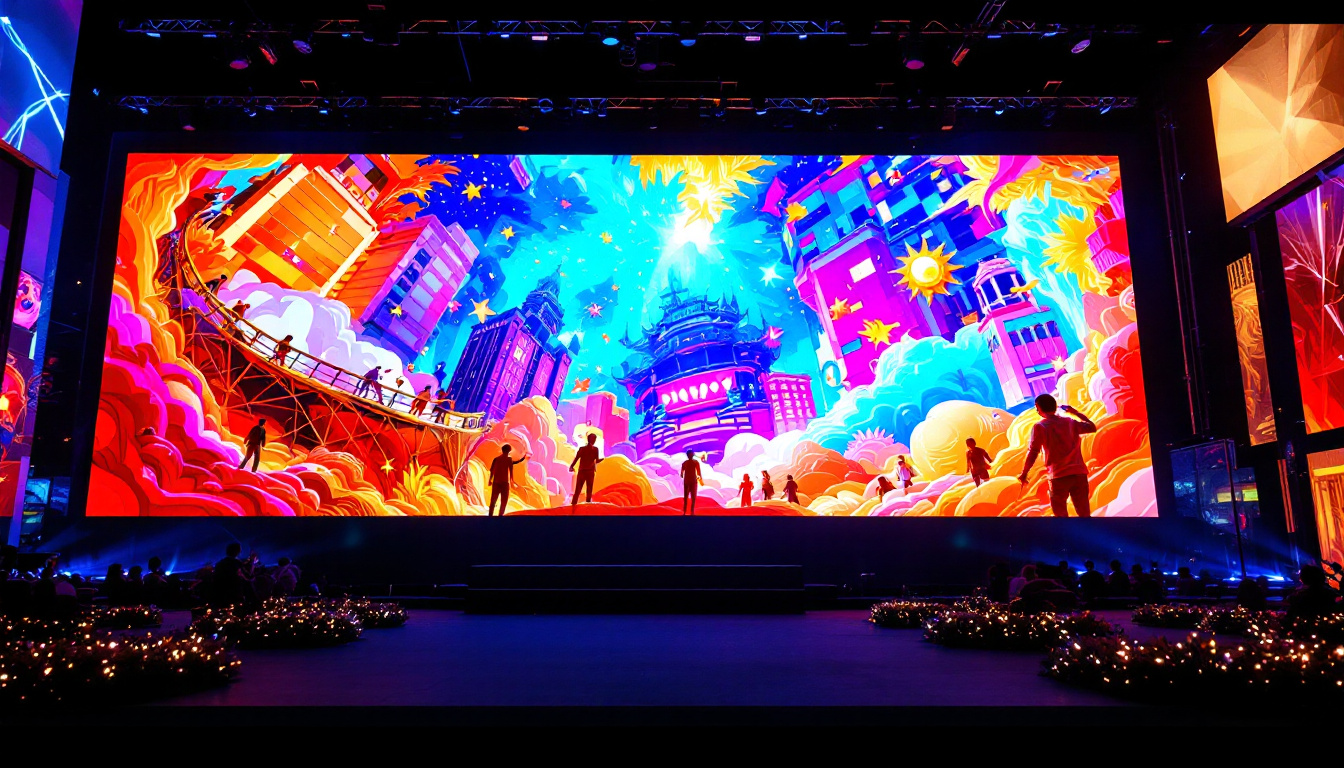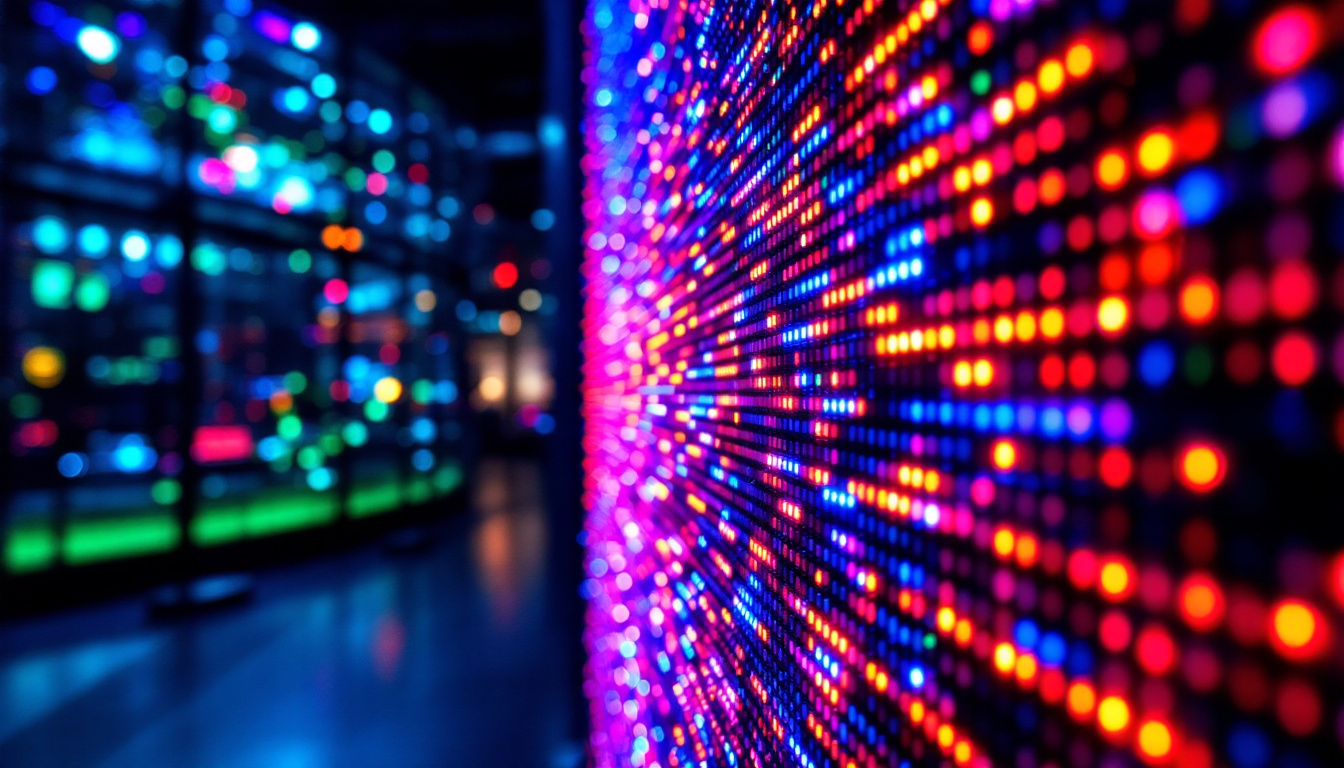How LCD Display Works: LED Display Explained
In the realm of modern technology, displays play a crucial role in how we interact with devices. Among the most prevalent types of displays are LCD (Liquid Crystal Display) and LED (Light Emitting Diode) technologies. While they are often mentioned together, understanding their individual workings is essential for grasping the nuances of visual technology. This article delves into how LCD displays operate, the role of LED in enhancing them, and the differences between these two technologies.
Understanding LCD Technology
LCD technology has revolutionized the way images are displayed on screens. It utilizes liquid crystals sandwiched between layers of glass or plastic. These crystals manipulate light to create images, which is a fascinating process that combines physics and engineering. The advent of LCD technology has not only enhanced the visual experience but has also contributed to the development of slimmer and more energy-efficient devices, making it a cornerstone of modern display technology.
The Basics of Liquid Crystals
Liquid crystals are unique substances that exhibit properties of both liquids and solids. They can flow like a liquid but have the ordered structure of a solid. This duality allows them to control light in a way that is essential for display technology. When an electric current is applied to the liquid crystals, they align in a manner that either blocks or allows light to pass through. This phenomenon is known as electro-optic effect, and it is the key mechanism that enables the dynamic display of images.
This alignment is crucial for creating images on the screen. By controlling the orientation of the liquid crystals, different colors and intensities of light can be produced, which ultimately forms the images we see. The manipulation of these crystals is what makes LCD technology so versatile and widely used in various devices, from televisions to smartphones. Furthermore, advancements in liquid crystal materials have led to improvements in color accuracy and response times, enhancing the overall viewing experience for users.
The Structure of an LCD Panel
An LCD panel is composed of several layers, each serving a specific function. The primary components include:
- Backlight: This is the light source that illuminates the display. It can be provided by fluorescent tubes or, more commonly in modern displays, by LEDs.
- Polarizers: These layers filter the light to ensure that it is polarized, which is necessary for the liquid crystals to function correctly.
- Liquid Crystal Layer: This is where the magic happens. The liquid crystals manipulate the polarized light to create images.
- Color Filters: These filters are used to produce the full spectrum of colors by allowing only certain wavelengths of light to pass through.
Each of these components works together to create a vibrant and clear image. The quality of an LCD display can vary significantly based on the materials and technologies used in these layers. For instance, the type of backlight can greatly influence the brightness and energy efficiency of the display, while the quality of the polarizers and color filters can affect the overall color reproduction and contrast ratio. Additionally, innovations such as In-Plane Switching (IPS) technology have emerged, allowing for wider viewing angles and improved color consistency, further enhancing the performance of LCD screens.
Moreover, the ongoing research in LCD technology continues to push boundaries, with developments aimed at improving refresh rates and reducing response times. This is particularly significant for applications in gaming and high-definition video playback, where smooth transitions and minimal motion blur are critical. As manufacturers strive to meet the demands of consumers for higher quality displays, the evolution of LCD technology remains an exciting field, promising even more advancements in the years to come.
The Role of LED in LCD Displays
While LCD technology itself is impressive, the integration of LED technology has further enhanced its capabilities. LED backlighting has become the standard for most modern LCD screens, replacing older fluorescent lighting methods.
Advantages of LED Backlighting
LED backlighting offers several advantages over traditional fluorescent backlighting. One of the most significant benefits is energy efficiency. LEDs consume less power, leading to lower energy bills and a reduced environmental impact. This efficiency is particularly important in larger displays, such as televisions and computer monitors.
Additionally, LED backlighting allows for better contrast ratios. LEDs can be turned on and off more quickly than fluorescent lights, enabling deeper blacks and brighter whites. This capability results in a more dynamic range of colors and improved image quality overall.
Types of LED Backlighting
There are primarily two types of LED backlighting used in LCD displays: edge-lit and direct-lit. Understanding these types is essential for consumers looking to purchase a new display.
- Edge-lit LED: In this configuration, LEDs are placed along the edges of the screen. Light is then spread across the display using a light guide plate. This design allows for thinner screens but may result in less uniform brightness.
- Direct-lit LED: Here, LEDs are placed directly behind the LCD panel. This setup provides more uniform lighting and better contrast, making it a popular choice for high-end displays.
Each method has its own set of advantages and drawbacks, and the choice between them often depends on the intended use of the display.
How LCD Displays Create Images
The process of image creation in an LCD display involves several steps, from the initial input of an image to the final output on the screen. Understanding this process can provide insights into the technology’s complexity.
Signal Processing
The journey begins with a signal being sent to the display from a device, such as a computer or a gaming console. This signal contains information about the colors and brightness levels required for each pixel on the screen. A dedicated controller interprets this signal and translates it into a format that the LCD panel can understand.
Once the signal is processed, it is sent to the individual pixels on the screen. Each pixel is made up of subpixels, typically red, green, and blue (RGB). By varying the intensity of these subpixels, a wide range of colors can be produced, creating the final image that the viewer sees.
Image Rendering
After the signal has been processed, the liquid crystals begin to react. The controller sends electrical currents to the liquid crystals, causing them to align in specific ways. This alignment determines how much light passes through each pixel, effectively rendering the image on the screen.
The combination of the backlight, liquid crystals, and color filters results in the vibrant images that LCD displays are known for. The entire process occurs rapidly, with refresh rates typically ranging from 60Hz to 240Hz, ensuring smooth motion and clarity for moving images.
Comparing LCD and LED Displays
While LCD and LED displays are often mentioned in tandem, they are not the same technology. Understanding the differences can help consumers make informed decisions when purchasing new devices.
Display Technology Differences
At its core, the primary difference lies in the backlighting technology. LCD displays use liquid crystals to manipulate light, while LED displays utilize light-emitting diodes for backlighting. This distinction affects various aspects of performance, including brightness, contrast, and color accuracy.
LED displays, particularly those with advanced features like local dimming, can achieve deeper blacks and brighter highlights compared to traditional LCDs. This capability is especially noticeable in high-definition content, where contrast plays a crucial role in image quality.
Applications and Use Cases
Both LCD and LED technologies have their respective applications. LCD displays are commonly found in a wide range of devices, from monitors and televisions to smartphones and tablets. They are favored for their energy efficiency and ability to produce vibrant colors.
On the other hand, LED displays are often used in high-end televisions and professional monitors, where superior image quality is paramount. They are also increasingly used in outdoor signage and large displays due to their brightness and visibility in various lighting conditions.
Future of LCD and LED Technologies
The future of display technologies is promising, with ongoing advancements in both LCD and LED technologies. Innovations are continually being made to enhance image quality, energy efficiency, and overall performance.
Emerging Technologies
One of the most exciting developments is the integration of OLED (Organic Light Emitting Diode) technology. OLED displays offer even greater contrast ratios and color accuracy than traditional LED displays. However, they come with their own set of challenges, such as potential burn-in and higher production costs.
In addition, advancements in quantum dot technology are also enhancing the capabilities of LCD and LED displays. Quantum dots can improve color accuracy and brightness, providing even more vibrant images.
Sustainability and Energy Efficiency
As environmental concerns grow, the focus on sustainability in display technology is becoming increasingly important. Manufacturers are exploring ways to reduce energy consumption and minimize waste during production. This shift towards greener technologies is likely to shape the future of both LCD and LED displays.
Conclusion
Understanding how LCD displays work, particularly in conjunction with LED technology, provides valuable insights into the screens that dominate our daily lives. From the manipulation of liquid crystals to the role of backlighting, each component plays a vital role in delivering the images we see.
As technology continues to evolve, consumers can expect even more impressive advancements in display quality and energy efficiency. Whether opting for an LCD or LED display, the choice ultimately depends on individual preferences and intended use. With a solid understanding of these technologies, making an informed decision becomes much easier.
Discover LumenMatrix’s Advanced LED Display Solutions
As you consider the future of display technologies for your personal or professional needs, LumenMatrix invites you to explore our extensive range of LED display modules. Our commitment to innovation ensures that each solution, from Indoor and Outdoor LED Wall Displays to Custom and All-in-One LED Displays, provides superior brand visibility and captivating visual experiences. Embrace the revolution in visual communication with LumenMatrix’s cutting-edge digital signage and LED display solutions. Check out LumenMatrix LED Display Solutions today and see how we can enhance engagement and transform your message into a powerful visual statement.































